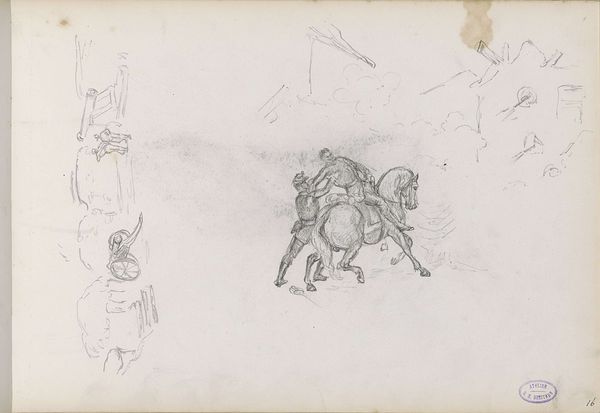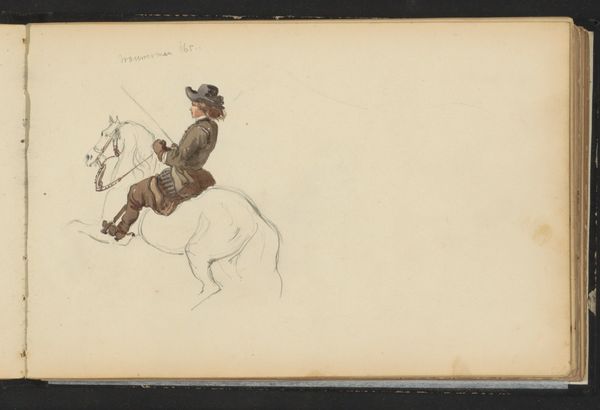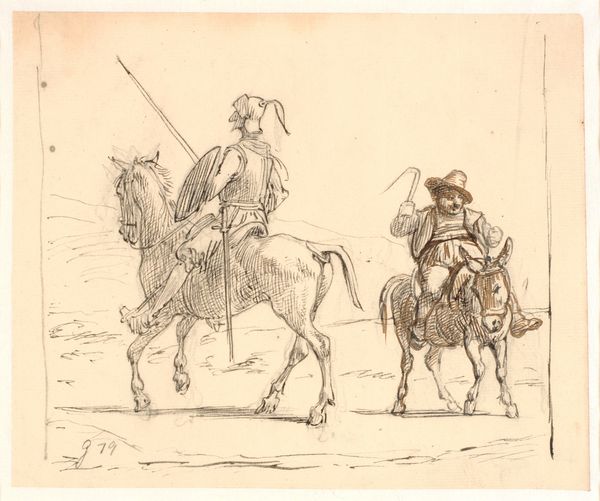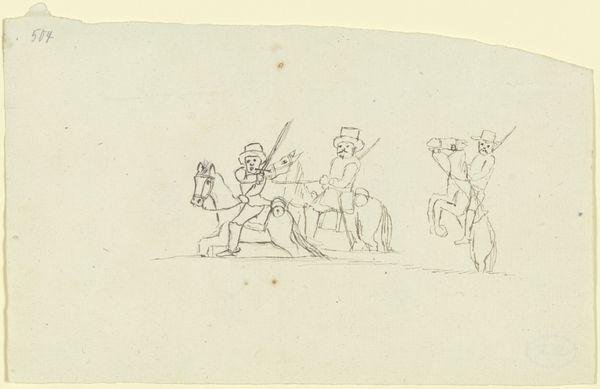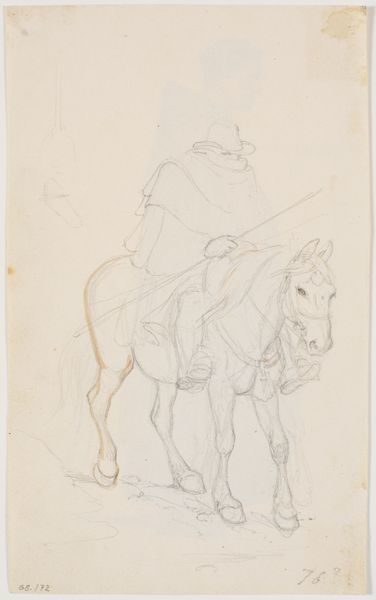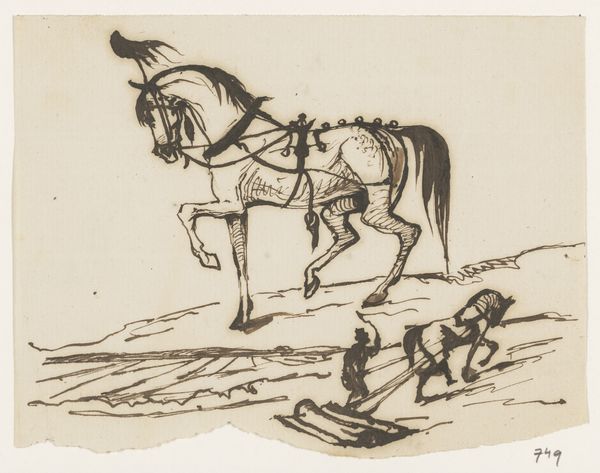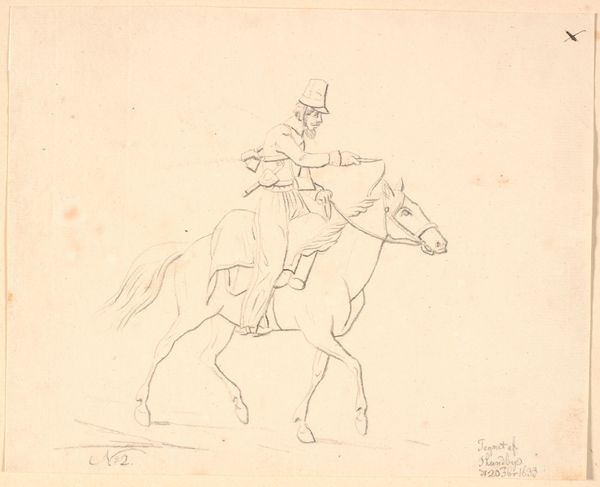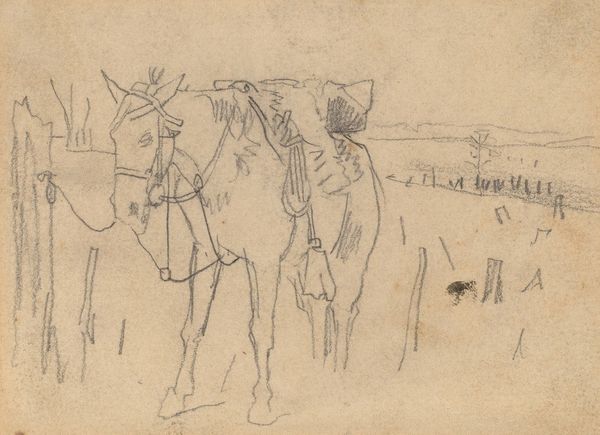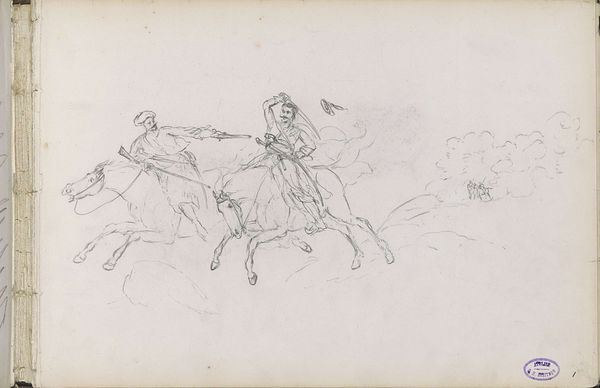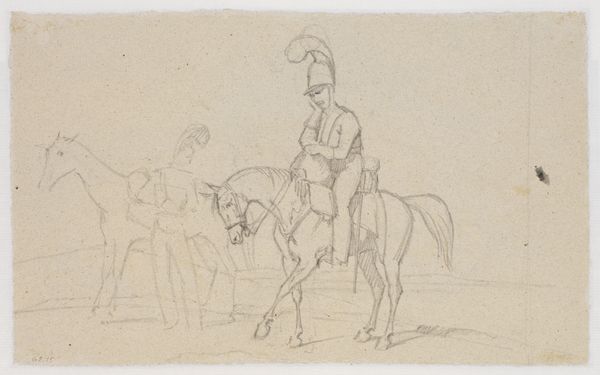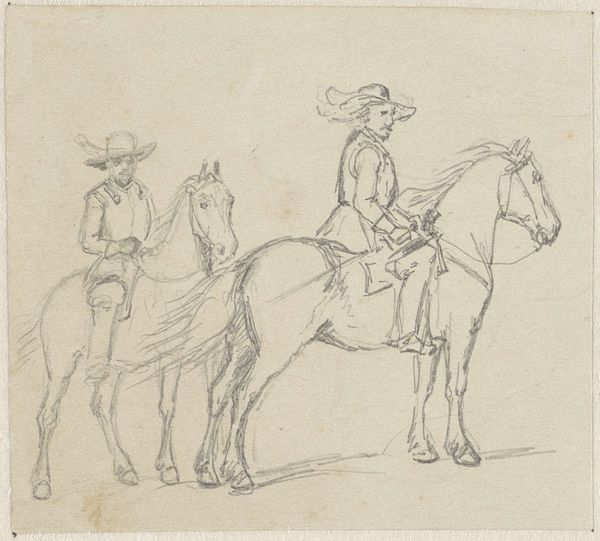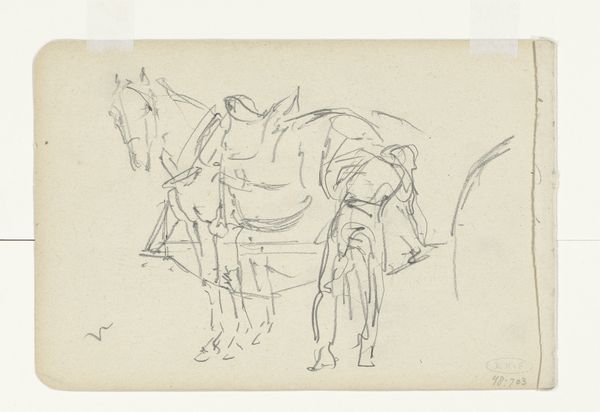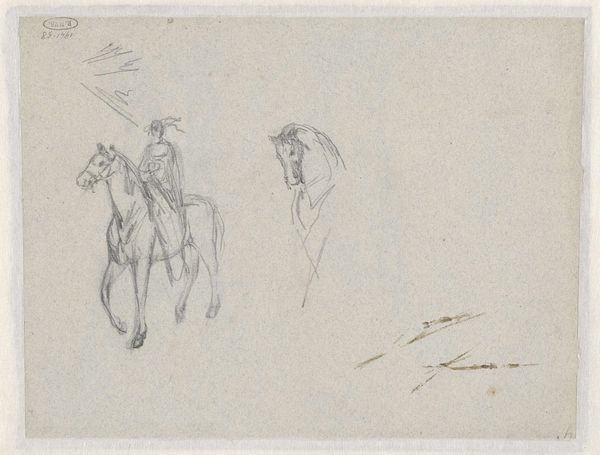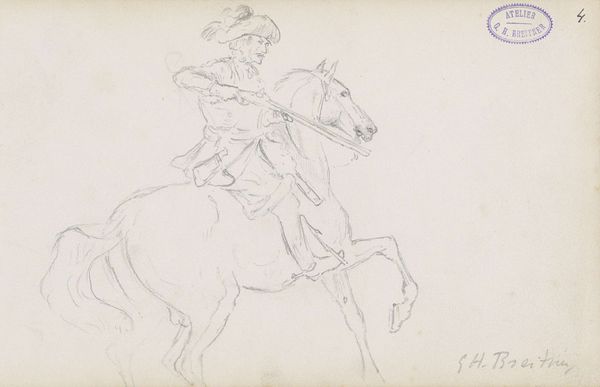
drawing, watercolor, pencil
#
portrait
#
drawing
#
dutch-golden-age
#
impressionism
#
landscape
#
watercolor
#
pencil
#
horse
#
genre-painting
#
realism
Dimensions: height 242 mm, width 347 mm
Copyright: Rijks Museum: Open Domain
Curator: Immediately, there’s an almost cinematic quality to this study—three men, a boy, three horses... It's as if the artist captured a fleeting moment on a stage. Editor: Indeed! What we are looking at is a drawing called "Three Men and a Boy with Three Horses" crafted with pencil and watercolor in 1873 by George Hendrik Breitner, which currently resides here at the Rijksmuseum. Its soft hues feel more suggestive than declarative. Curator: Absolutely. Breitner was fascinated by the play of light. It strikes me that in this composition, light and shadow become symbolic—revealing the world in fragments. Notice the man on the left—the shadow cast upon his back almost absorbs him back into the ground as if to imply some spiritual connection between Man and Nature. Editor: And those figures rendered merely as outlines, fading away as they lead the horse, almost as spectral figures—their hats as blatant indicators of identity, social status... Their symbolism suggests a deeper narrative, hinting at stories untold and invisible forces moving through our lives. It calls back genre painting themes where individuals perform mundane social tasks—here tending to horses rather than feasting as depicted previously by Dutch Masters during the Dutch Golden Age. Curator: A memory! It’s there, right? You're seeing more than just pigment; it’s a cultural echo whispering to you, reminding you of an era not so very long ago that still very much lives within our culture today. In many ways this piece has a lot to say with so little. Editor: The sketch-like quality underscores a sense of transience... The symbol of the horse in this moment embodies both vitality and servitude—bound by those same social structures which also bind and constrain the individuals charged to care for them. I wonder about that relationship and what is meant to be said... Curator: Yes, well put—perhaps the incomplete sketches echo the unfinished business of history itself... Always evolving, forever caught mid-stride. I am going to take another walk around; how is it that I can get so much from the suggestion of details alone? Editor: Precisely! It’s like viewing a shared dream, continuously shaped and re-shaped over time, connecting us across eras, offering reflections on ourselves. And I think the echo you refer to speaks to memory as the foundation of personal growth: the figures are less present in time than they are presented across spans.
Comments
No comments
Be the first to comment and join the conversation on the ultimate creative platform.
